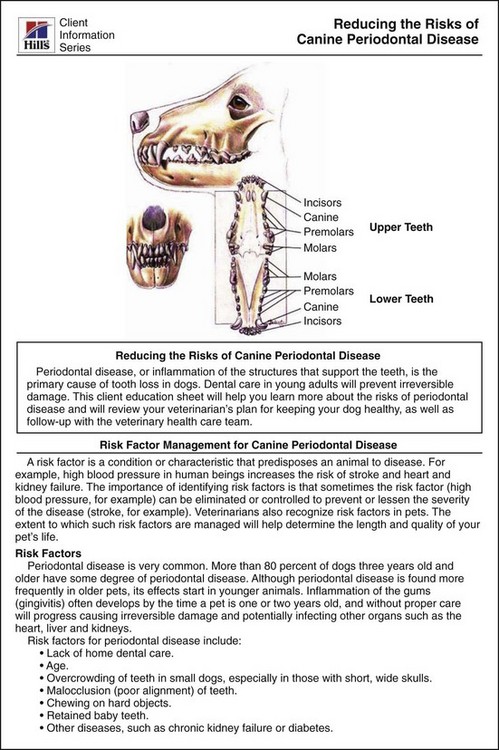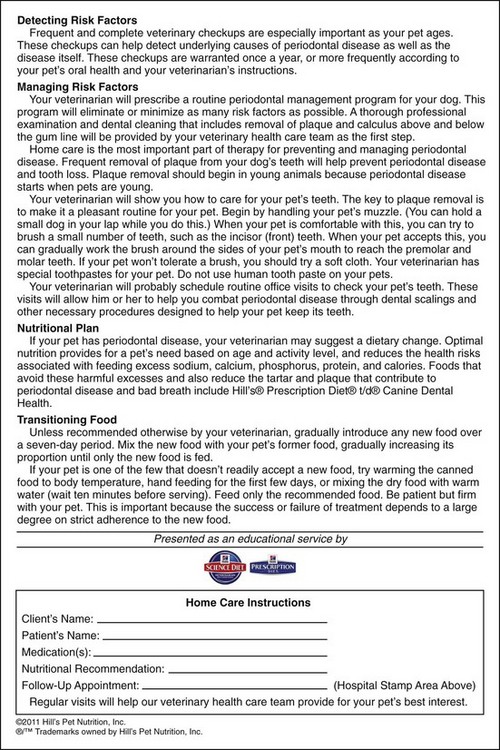15 Marketing Veterinary Dentistry
When you have completed this chapter, you will be able to:
• Describe strategies for marketing veterinary dental services.
• Describe the “smile book” and explain how this is used in marketing veterinary dental services.
• List possible topics for the dentistry section of a practice newsletter.
• Explain how estimates and consent forms can be used as tools for marketing veterinary dental services.
• State examples of veterinary dental marketing materials.
• Discuss methods of internet marketing.
• Describe methods that can be used to market dental services during regular patient examinations and list suggested topics for client education in the examination room.
Marketing Strategies
Smile Book
A “smile book” is a pictorial description of procedures performed in the practice. One effective strategy is to include “before and after” photographs of dental procedures. This type of visual aid can be used to educate the client with regard to expected outcomes. It also can be used to describe the various steps of a recommended procedure or alternative procedure. Professional books can be made relatively easily through programs such as iphoto for Macintosh or online through websites such as www.Blurb.com, www.shutterfly.com, www.kodakgallery.com, and many others.
Newsletters
The practice newsletter should include a section on dentistry. Potential topics include the cause of periodontal disease, treatment techniques for the prevention and treatment of periodontal disease, fractured teeth, dietary considerations in dentistry, veterinary dental orthodontics, tooth resorption, and dental home-care products. Clip art, which is available from several commercial sources, can be used to enliven the textual content. With the advent of the internet, mailing lists can be collected and newsletters can be sent out through companies such as www.constantcontact.com.
Handouts
Handouts give the client additional information on the procedure or procedures that must be performed. Several pharmaceutical companies distribute helpful handouts and transparencies that may mention the company’s products on the back page but focus primarily on delivering objective information. Handouts are also available for purchase through commercial companies. Figure 15-1 is an example of a handout produced by Hills.
Stay updated, free articles. Join our Telegram channel

Full access? Get Clinical Tree




